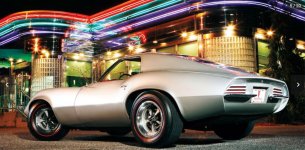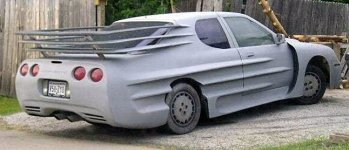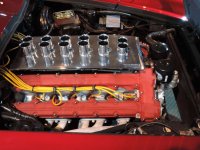The Banshee’s Cost-Conscious Chassis
If you're getting the feeling the Pontiac Banshee rides on a very cost-conscious chassis, you're right. Collins tells us,
"The objective was to use some of the basic A-car chassis components, so you don't have to retool them.
The silver coupe demonstrates what would have been the base model, the price leader." Backing this up is what we find under the hood: a straight six! While Corvettes hadn't used a six since 1954, Collins chose Pontiac's new-for-1966 230-cubic-inch overhead-cam six with its pioneering flex-belt-driven cam drive.
But rather than the sexy 215-hp Sprint version with its Rochester four-barrel carburetor and two-piece cast iron header, this one's the basic model with a pedestrian one-barrel carburetor, log-style exhaust manifold, and 165-hp rating.
Collins tells us the idea behind the XP-833 was to deliver an affordable and fun two-seat sports car, not an exotic road racer. But, he adds,
"There was going to be a long option list," so few production examples would have been as austere as our silver coupe.
In fact, a second XP-833 was constructed with a 326 V-8 just to give a taste of what was possible with extra power. This car exists today in Joe Bortz's collection and is a roadster (actually a coupe minus its removable fastback top).
We asked Collins if any thought was given to making Pontiac's top 1966 engine offering—the 421—available as an option. He replied, "You're talking to the guy who did the
original GTO…what do you think?
But we didn't want to scare the corporation off initially by showing off too much. We'd have worked our way up to the big engines after the start of production."





